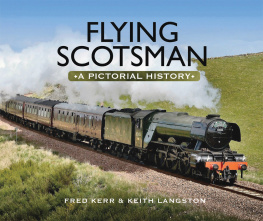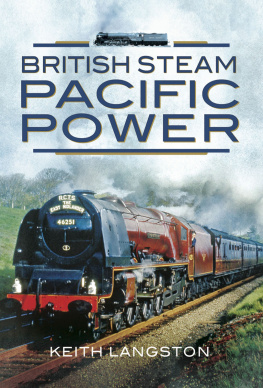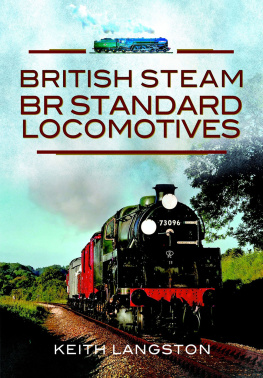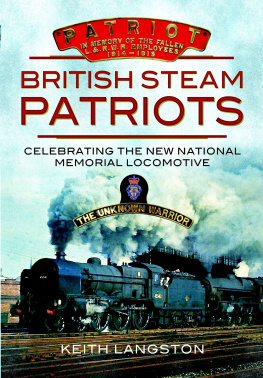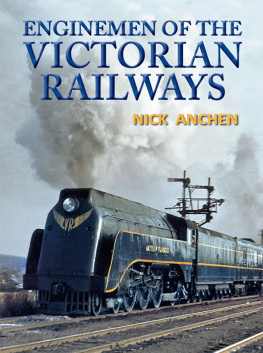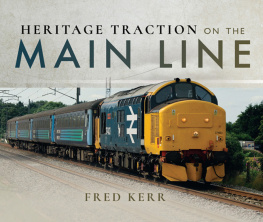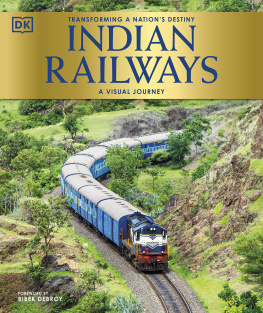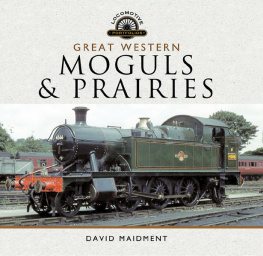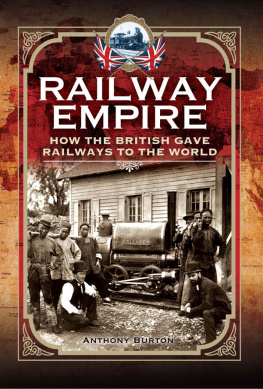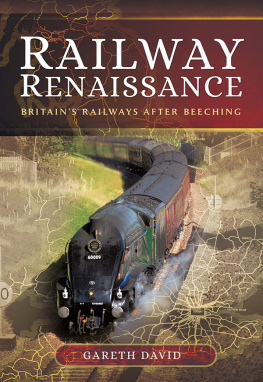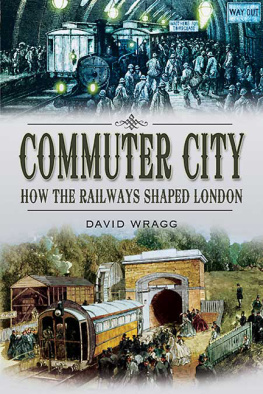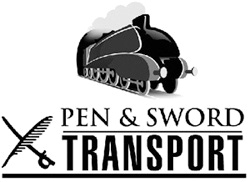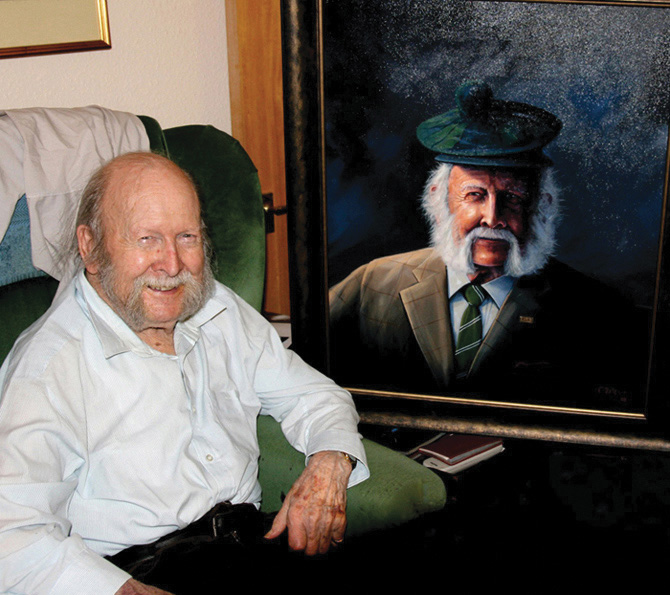
FLYING SCOTSMAN
A PICTORIAL HISTORY
This publication utilises QR codes throughout, which can be scanned by most smart phones and tablet computers. To scan the QR code, a QR Reader will first need to be downloaded from your phones App Store these are freely available and easy to download. Once downloaded, scan the QR code and your phone will divert you to the relevant YouTube video/website.
FLYING SCOTSMAN
A PICTORIAL HISTORY
FRED KERR AND KEITH LANGSTON
ACKNOWLEDGEMENTS
T hanks are due to the following archivists and photographers who have allowed their images to be used during the production of this book.
John Chalcraft of Rail Photoprints Collections, Brian Stephenson of Rail Archive Stephenson, David Anderson, Joy and John Beresford, Gary Boyd-Hope, Clive Hanley, Julie and Brian Jones, Brian Morrison, Leon Oberg, Malcolm Ranieri, Peter Sherwood and Craig Tiley.
In addition, there are images from the collections of the joint authors.
This book is dedicated to the memory of the late David (Dave) Jones of Rhyl who passed away during 2016. In addition to being a good friend David was an accomplished railway photographer and a stalwart member of the Llangollen Railway, where he regularly worked as a member of the signal and telegraph department.
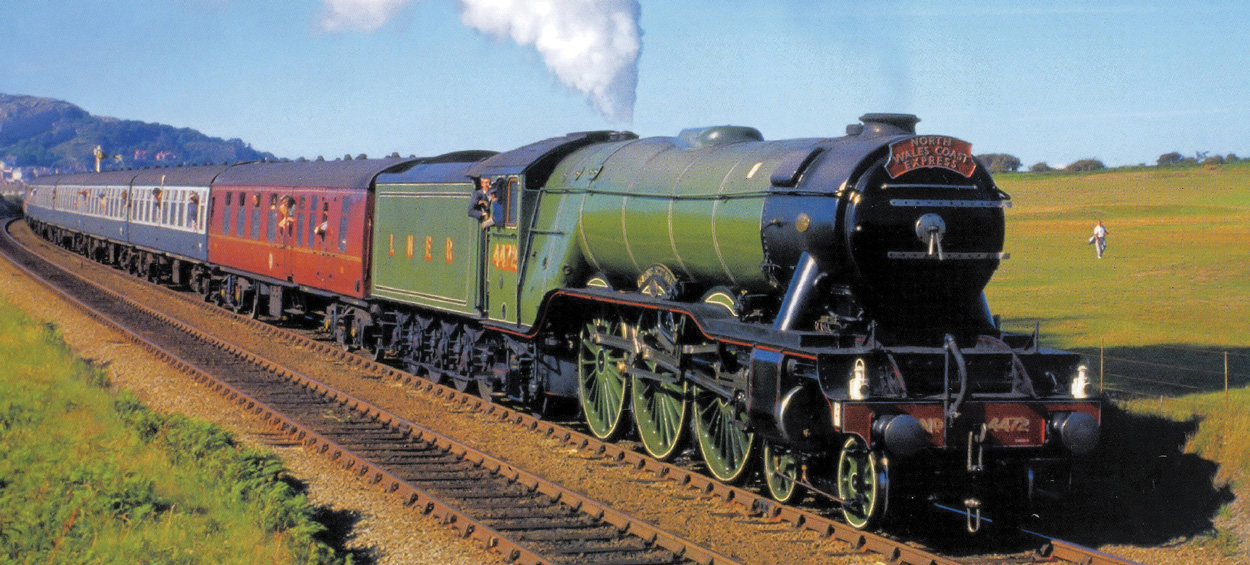
FLYING SCOTSMAN is seen on the branch leaving Llandudno with a North Wales Coast Express working. Dave Jones
The man who saved
FLYING SCOTSMAN
Alan Francis Pegler OBE, FRSA (16/04/1920 - 18/03/2012)
Alan sat for a portrait at the suggestion of his friend Petrina Derrington and the artist chosen was Craig Tiley, to whom we are indebted for the use of this image of Alan seen with his recently finished painting. Visit www.craigtiley.co.uk
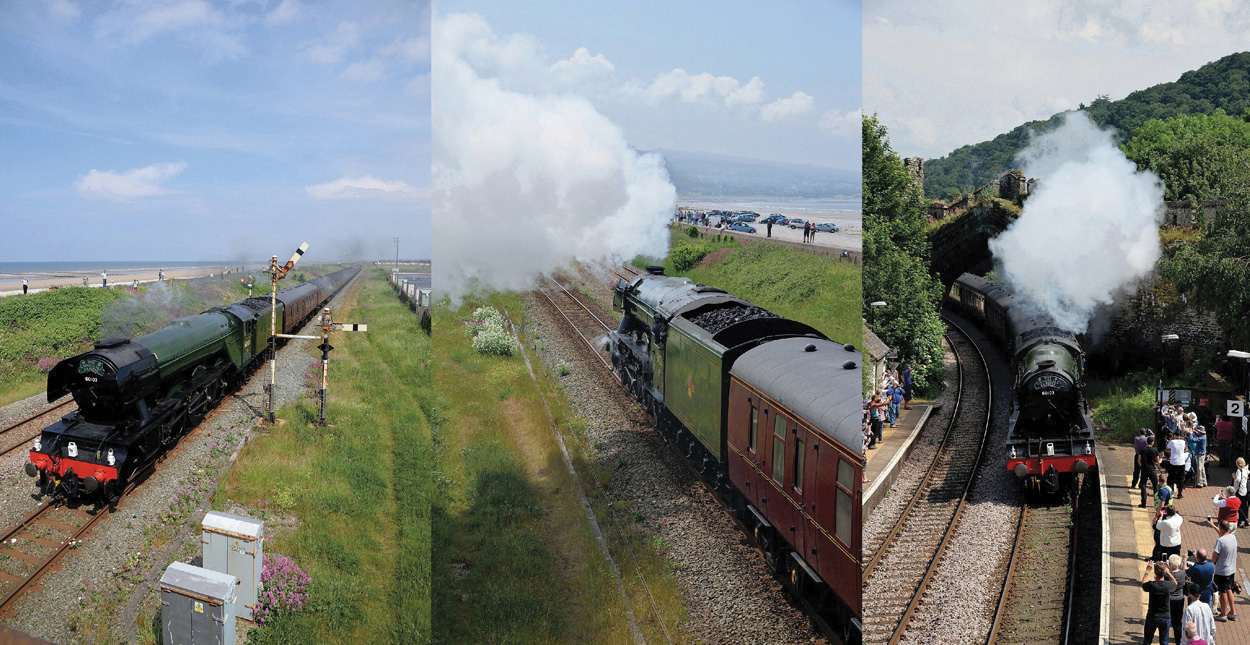
In 2016 rebuilt A3 Pacific FLYING SCOTSMAN, in the guise of BR No 60103, made a triumphant return to the mainline. On 15 June 2016 the locomotive took over a Euston to Holyhead trip providing steam for outward and return trips Crewe-Holyhead-Crewe. No 60103 is seen on the outward journey passing Abergele & Pensarn and thereafter Conwy station, the latter after stopping at Llandudno Junction to take water. On this occasion the North Wales coast was bathed in glorious sunshine. All images Fred Kerr
FLYING SCOTSMAN took its name from the popular sobriquet applied to East Coast Anglo Scottish expresses in general, and in particular to the appropriately named simultaneous departures from London Kings Cross and Edinburgh Waverley, which was introduced in 1862 and originally termed The Special Scotch Express. In 1860 the three East Coast companies, the North British Railway, the North Eastern Railway and the Great Northern Railway established the so-called East Coast Joint Stock for through services using common vehicles, and it is from this agreement that the train FLYING SCOTSMAN came about. A Flying Scotsman service is operated over the route by Virgin Trains, at the time of writing.
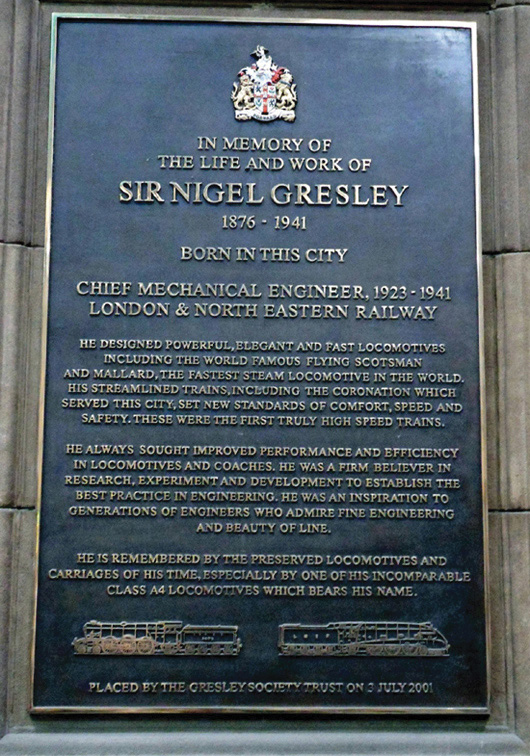
The memorial plaque to Gresleys achievements, displayed at Edinburgh Waverley station. A statue to him was unveiled at Kings Cross station in London on 5 April 2016, the 75th anniversary of his death. Keith Langston Collection
Dr. Sir Herbert Nigel Gresley C.B.E. Great Northern Railway/London North Eastern Railway
Although his family was from Netherseal, Derbyshire Herbert Nigel Gresley was actually born in Edinburgh on 19 June 1876, that location being due to his mothers ante-natal complications.
Gresley was educated at a school in Sussex and thereafter at Marlborough College (1890-1893).
After leaving college Gresley joined the London & North Western Railway (LNWR) at Crewe Works where he was an apprentice under F.W. Webb. On the completion of his indentures in 1897 he became employed by the company and worked on the shop floor for a year.
Gresley moved to the Lancashire & Yorkshire Railway (L&YR) in 1898 where he worked under the locomotive engineer J.A.F. Aspinall. At the L&YR he served at the Blackpool depot as foreman of the running sheds and also worked in the L&YR Carriage & Wagon Department.
Gresley left to join the Great Northern Railway (GNR) in 1905, in order to take up the post of Superintendent in the Carriage & Wagon Department. In 1911 he was appointed Chief Mechanical Engineer (CME) of the GNR. Following that 1923 Grouping Gresley was appointed to the post of CME with the London North Eastern Railway (LNER). He was responsible for the design/modification of 10 GNR steam locomotive classes, which included one Pacific type. For the LNER Gresley designed/ rebuilt 18 locomotive classes which included 3 Pacific tender engine types and 2 Pacific Tank types.
Gresley was awarded the CBE in 1920, knighted in 1936 and made an honorary Doctor of Science by Manchester University in that same year.
Dr. Sir Herbert Nigel Gresley CBE died in service after a short illness on 5 April 1941, at his Hertfordshire home.
60103 Flying Scotsman departing London Kings Cross.
MADE IN DONCASTER
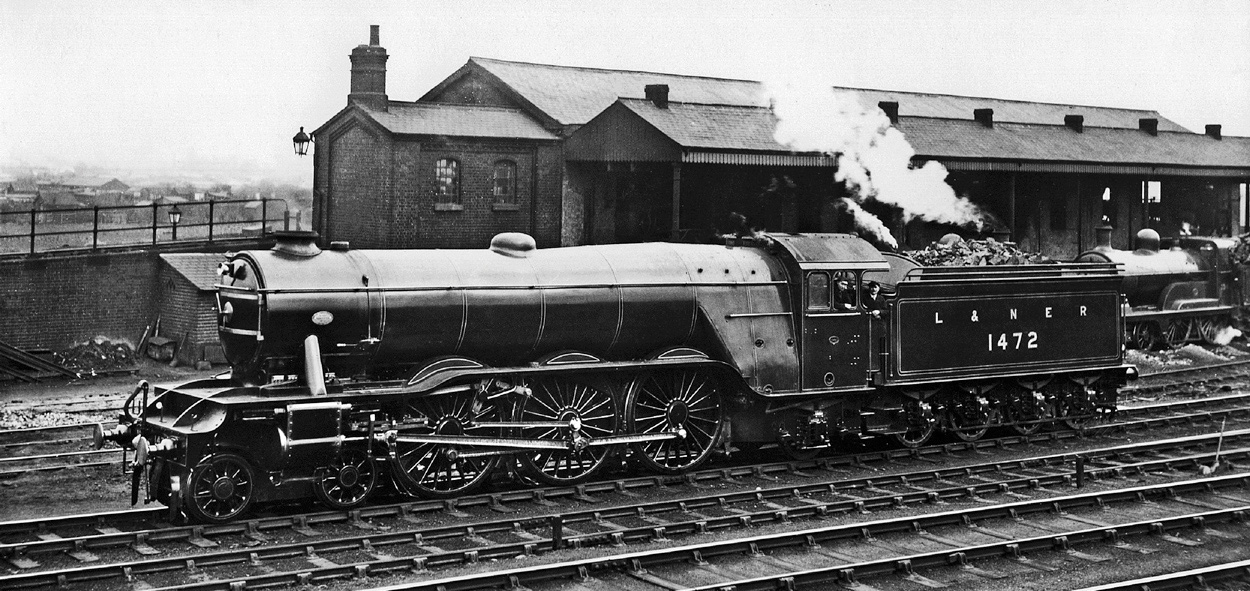
Gresley LNER Class A1 Pacific No 1472 is seen at Doncaster shed when new in 1923, and then unnamed; the engine became No 4472 FLYING SCOTSMAN during the following year. The A1 is coupled to a Great Northern Railway 5000gallon/8 ton tender (No 5223).
Note the & symbol included in the lettering on the locomotives tender, the symbol would shortly afterwards be dropped in favour of the more commonly known LNER (London North Eastern Railway). Note also that the coal is loaded above the height of the greedy bars, also the footplate crew seem happy to be in the photograph. W.H. Whitworth/Rail Archive Stephenson
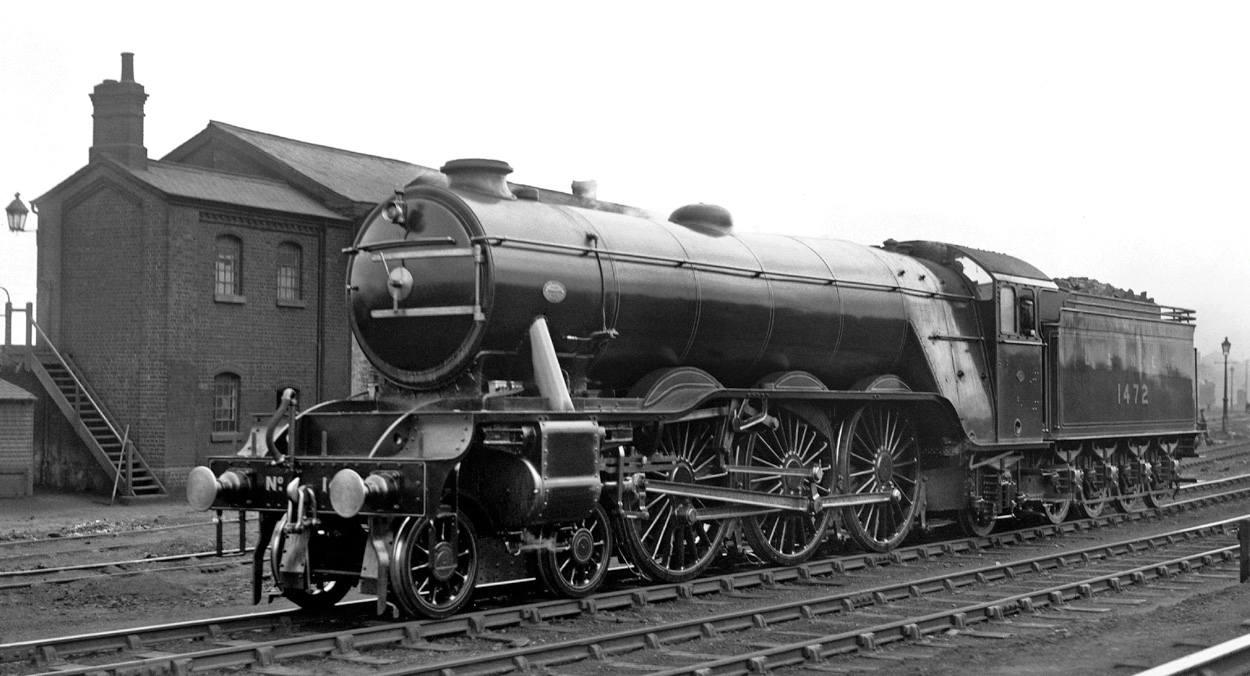
Another stunning image of Gresley LNER A1class Pacific No 1472 at Doncaster shed when new in 1923. Note the gas lights on the corner of the building and in the yard. Doncaster locomotive shed was given the code 36A by British Railways in 1948 which it retained until May 1973 but was closed to steam in June 1966. The original A1s were coupled to a traditional style Great Northern Railway (GNR) type of tender with coal rails (greedy bars). The capacity of the 8-wheel tender was 8 tons of coal and 5,000 gallons of water. W.H. Whitworth/Rail Archive Stephenson

